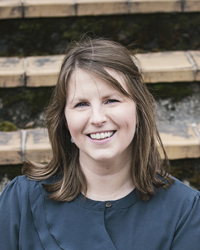App for MedCards
In the Region of Southern Denmark, the IT system Infonet is used for guidance/instructions for the clinical staff. But Infonet can be "difficult" to navigate, and since there was no mobile version that was easily accessible to the staff, it was common for the departments to print and laminate so-called "coat cards" for the staff to give quick access to the most common instructions.
PROJECT PERIOD
Start: April 2017
Slut: Juni 2018
A clear disadvantage of this was that printed cards quickly become outdated when new guidelines are introduced, and it is time-consuming to prepare new ones. In practice, this could mean that the staff treated patients based on outdated procedures.
AIM
The purpose of the project was to collaborate with the entrepreneurial company MyMedCards to adapt and further develop their app, which functions as digital competence (or "coat") cards based on the official instructions in Infonet - and possibly also other specially developed instructions which are not suitable for Infonet. In this way, the app should give the clinical staff easy access to the latest and most up-to-date instructions and guidelines and contribute to ensuring correct treatment of the patients.
The expectation was also that the app should reduce the number of disruptions and questions between staff when everyone has easy access to the clinical instructions.
RESULTS AND ASSESSMENT
Through a mini-evaluation prepared by OUH's HTA unit, the staff's experience of MyMedCards was investigated using three semi-structured focus group interviews.
The results showed that the staff in the test departments were generally positive towards the app. Several mentioned that it adapts to the needs of the departments, providing easy and quick access to clear, in-depth information that is constantly updated – this is a big win compared to the paper-based pocket cards that the departments were used to. The app can be used by all types of departments and clinical staff, as everyone uses standard instructions and guidelines in their work.
However, there were individual development requests and change proposals for the app from staff. It was, among other things, about the division of the pocket cards according to specialties, which can be difficult for new employees to navigate. However, the biggest barrier to the spread of the app was the lack of work smartphones and the use of mobile phones in the clinical workflows in general. In addition, the external Infonet was closed during the test period, and was therefore unavailable via the app's link, which was a disadvantage, which however had nothing to do with MyMedCards.
After the project ended, the two pilot departments continued to use the app, which was updated to a new and improved version in July 2018, based on staff feedback. Since the project, several departments have expressed a desire to use the app, and in August 2019 OUH signed a purchase agreement with MyMedCards, so that the app will now be available to all departments that want to use it for their staff.
PARTNERS
The two pilot departments in the project were the Emergency Department in Odense and the Department of Anaesthesiology and Intensive Care at Svendborg Hospital.
The project was carried out in close collaboration with Clinical IT and the company MyMedCards, which was behind the app that was tested on the wards.

Lea Bohn
Communications & Event Manager
Centre for Innovative Medical Technology (CIMT). Odense University Hospital, Dept. of Clinical Development - Innovation, Research & HTA
(+45) 5164 0948 lea.bohn@rsyd.dk

Anne Mette Ølholm
Head of Assessment
Centre for Innovative Medical Technology (CIMT). Odense University Hospital, Dept. of Clinical Development - Innovation, Research & HTA
(+45) 3046 0895 anne.mette.oelholm@rsyd.dk
